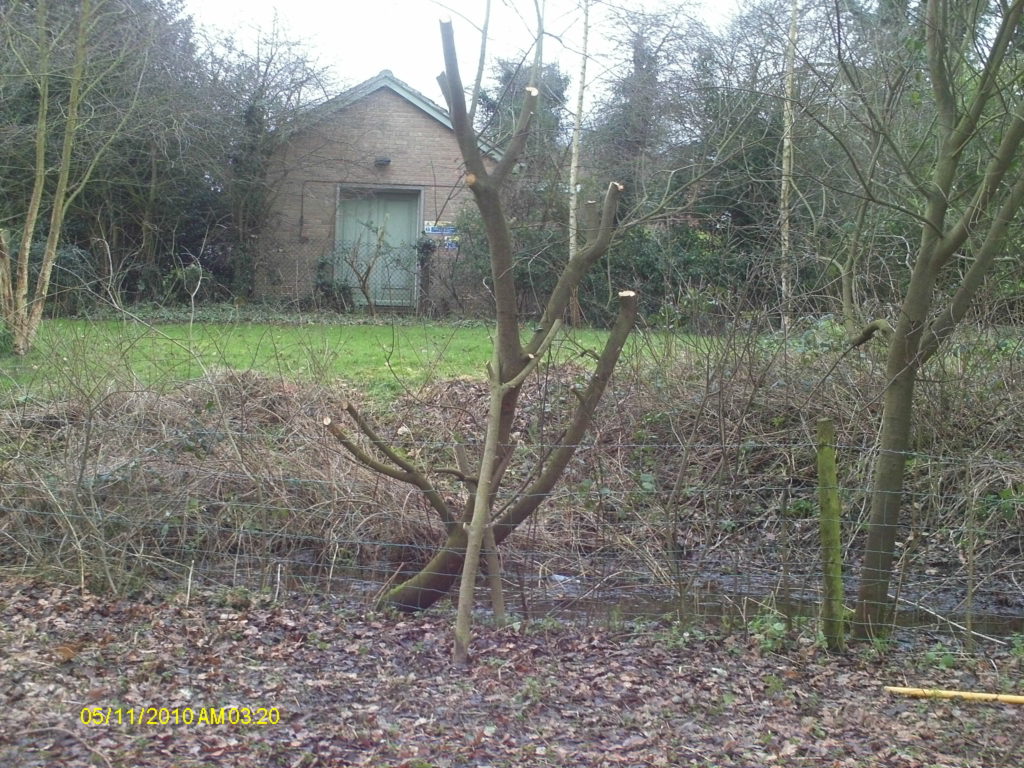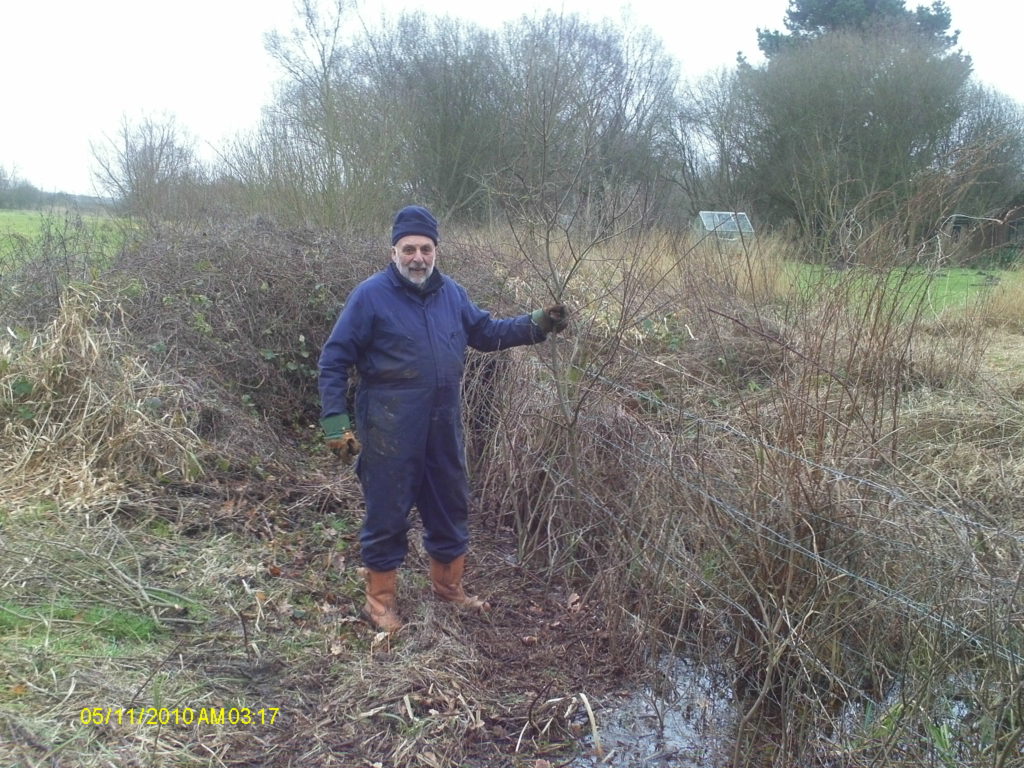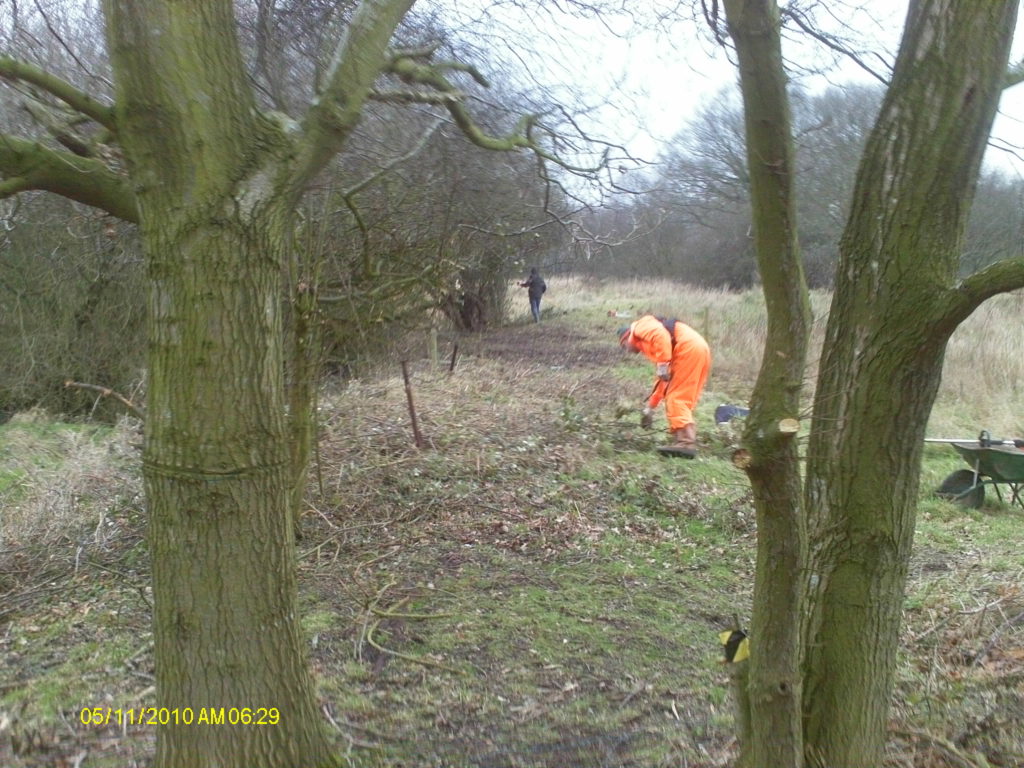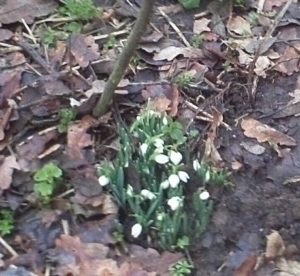
On Wednesday January 29th, the volunteer team spent the morning at the station site. Here, the last
remnants of the large tree which came down in the St Jude’s storm
were cleared away. The pond margin at the western end of the waterway
was also cleared of fallen wood, which will improve water quality. Where
living, rather than the more usual dead, trees were storm-destroyed, we
have replanted a large number of six-foot sprigs – along our southern
boundary – to improve the green visual barrier.
The area is now cleared, attractive, and above all safe, in case
officers or councillors wish to visit, in conjunction with our latest
planning application. Many local people also walk through this land, the
pastures and wooded areas: we have a duty to ensure that they, also,
are safe. Removing the underbrush, nettles, fallen trees and brambles
has already opened out the habitat, resulting in a number of new wild
plants being seen – a snowdrop (marked so that we didn’t step on it) is
shown.
A slightly drier area for staff parking has been strimmed, as has the exit from the station site, to the
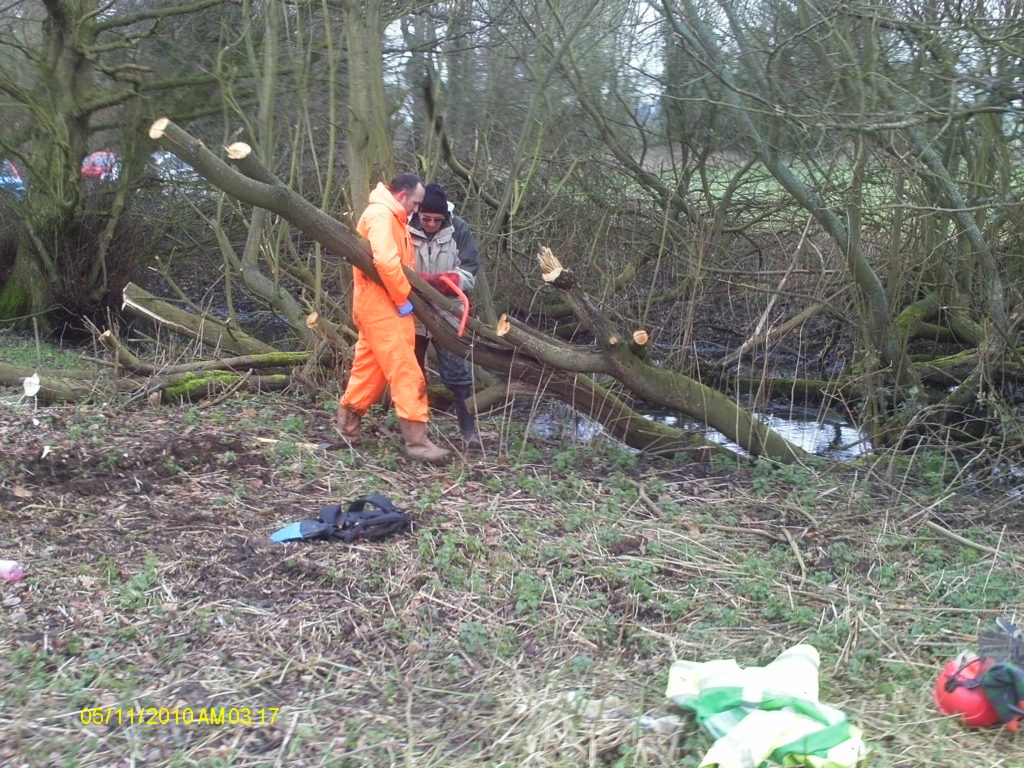
east. A local contractor will be improving the entrance gate area, so
that volunteer cars (and the vintage bus on this year’s Railway Tours) can enter and exit more easily and safely.
Completing this area, we then moved on to the SR trackbed itself, and
divided our time between pulling down and cutting up more dead trees in
the wooded section, and dealing with brambles, and fallen and damaged
trees, at the point where the trackbed curves slightly southwards and
crosses the pasture. This clearance shows that the embankment has been
lowered quite considerably in places – either robbed out to build up
other areas, or slumped because of standing cattle.
We now have about a month before the birds’ nesting season will make the
removal of any tree or bush (which might have a nest) much more
difficult, and we plan not to do this until the season ends on July
31st. We will probably, now, be able to complete the current safety and
environmental work on the wooded section in time, thanks to the very
hard work of all our owner/volunteers. Then we can move on to the
non-seasonally-restricted activities onsite – stump removal, log
cutting, survey, chainage marking, and fencing.

